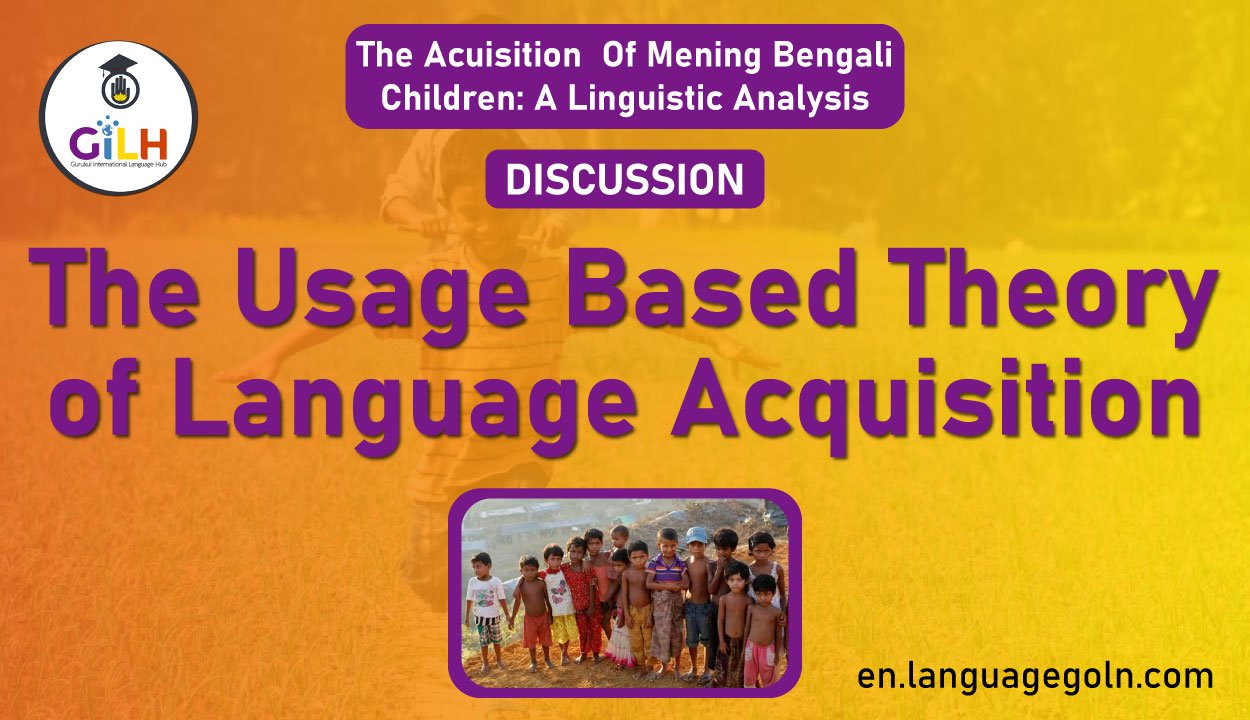Today our topic of discussion is – The Usage Based Theory of language acquisition
The Usage Based Theory of language acquisition
The theoretical perspective of this research is the ‘usage based theory of language acquisition’, proposed by Michael Tomasello (2003). As a basis for the analysis of the collected data, the key features of this theory will be presented briefly in the following segments.

According to Tomasello, children acquire language with the help of two sets of cognitive skills-
(a) Intention-reading: it helps the children discern the linguistic conventions of the adult speakers. These conventions are learnt culturally. Intention reading includes one of the vital pre-requisites of meaning acquisition, which is ‘joint attention’.
(b) Pattern- finding: it helps children to create abstract linguistic schemas or constructions beyond the individual utterances produced around them; like- categorization, analogy or distributional analysis.
Usage based approach views ‘communicative function’ of a language as the most important factor of language acquisition, because the process of communication starts in human infants at a very early stage, even before they can produce language (Tomasello, 2008). These communicative acts are not only the results of their understandings about the world, but also about understandings they share with their potential communicative partners.

Moreover, importance of utterances in early linguistic communication as a medium to express a complete communicative function is emphasized in this theory. An expression is a pre-linguistic communicative act that is used to direct the recipient’s attention to something of a reference and it also conveys a communicative motive.
They are all done through some form of emotional expression through face and voice. By comprehending an utterance and determining the functional roles of words in utterances help children learn words and their contexts indirectly.
Gradually children start mapping a single word onto a single object or action or even to a concept. In this way children learn most of the concrete words and actions other than noun and verb. Around at the age of 18 months (or above) children start combining words.
Through the use of word combination, children spilt the experiential scene into several symbolizable units. The pre-requisite for this stage is the successive utterance of a single word. At this age children’s multi word production has a more structured pattern.
The fundamental claim of the communication based or usage based theory is that both meaning and structure come from language use rather than learning word meanings and grammatical forms individually.

Child language acquisition should be analyzed by observing and understanding children’s comprehension and production of all meaningful utterances as children hear individual utterance first and then recreate the abstract construction of any language (Clark & Hecht, 2003).
The above mentioned features are very much involved in my data; when I started analyzing them, I found that meaning is actually linguistically coded. So the study of meaning acquisition involves analyzing how children link up both of their own and others cognitive concepts and ideas with the whole meaningful utterances. In this sense, the study of linguistic semantics and cognitive conceptualizations are interactive.
See more
